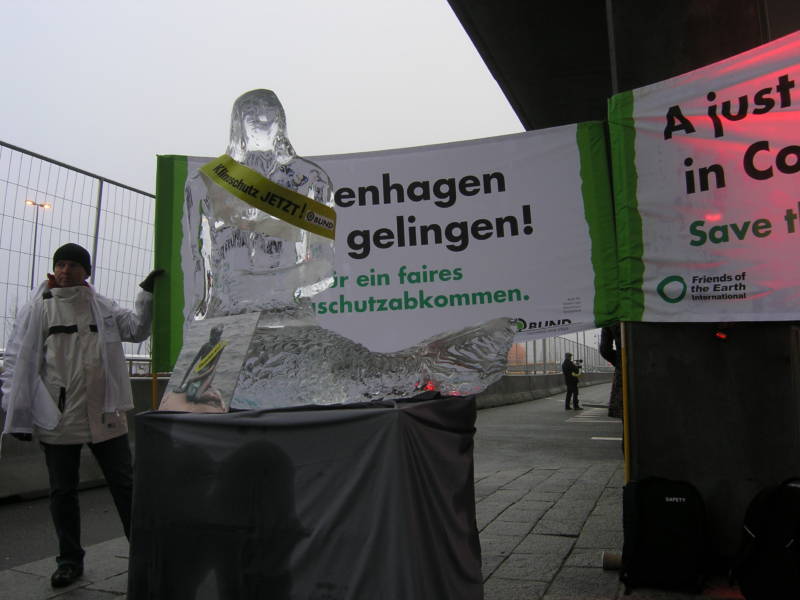
The capital city of this bone-chilling European country is dressed to the nines in global warming, from Coca-Cola ‘Hopenhagen‘ ads overlooking its quaint canals, to huge globes pasted with polar bears and receding glaciers. All this advertising makes all the lovely Scandinavian Christmas decorations look dim in comparison. This is, of course, COP 15– the most anticipated UN climate change convention since Kyoto twelve years ago. Despite the pessimism that pervaded the run-up to this conference, hope was the buzzword on the first day of the conference. In an afternoon news briefing, Yvo de Boer, ever the optimist about these meetings, stayed on message, telling reporters that it wasn’t for nothing that major heads of state like President Obama were changing their schedules to arrive at the end of the conference. They want to see a deal, de Boer said, and news from across the Atlantic that was first reported during the midday hours here in Copenhagen, may very well increase the odds.
As news started to trickle in that the US Environmental Protection Agency had determined that greenhouse gases are a threat to human health and the environment (thus opening carbon dioxide and equivalent greenhouse gases to government regulation with or without the blessing of Congress),* the excitement in the halls of the Bella Center rose. High fives were exchanged among American observers, and Rajendra Pachauri, chair of the Intergovernmental Panel on Climate Change told my office mate, Sam Eaton of Marketplace, that it was high time that Obama flexed his muscle on climate change. EPA’s move had been in the works for a while.

Back in September when I attended a climate change conference in Tokyo, UNFCCC head Yvo de Boer hinted it would happen. But it’ll take a lot more than an EPA announcement to move delegates toward a final deal at this conference. One of the biggest issues they face is how to finance emissions reductions throughout the developing world. Poor countries say they need rich countries to help them build a clean energy infrastructure if they are to agree to any binding deal. Rich countries are scratching their heads trying to figure out how to finance this (de Boer says it’ll cost around $10 billion a year) and, more importantly, how to divvy up the cost, especially in the throes of a global recession.
What does this mean for California? It’s one of the few states that have passed carbon dioxide reducing legislation. It behooves us to have neighbors, both domestically and internationally, who have similar laws, so that employers don’t flee the state to escape environmental regulations–a very real scenario in this economy. Whether or not Hopenhagen lives up its nickname, it’s already turning into an interesting event.
*Ed. Note: Back in Washington, at an afternoon news conference, EPA Administrator Lisa Jackson explained that today’s “finalizing” of the previously announced endangerment finding now “obligates” the agency to regulate carbon dioxide under the Clean Air Act. But she hastily added that it’s not a replacement for Congressional action. “Legislation is still the best way,” said Jackson. “It’s not an either-or proposition.”
